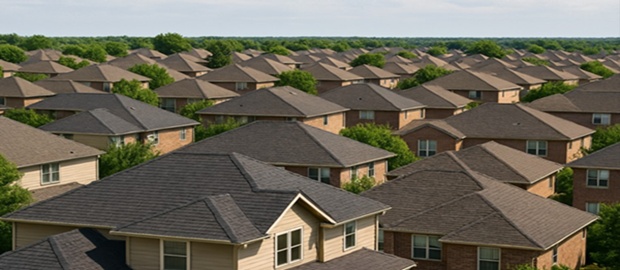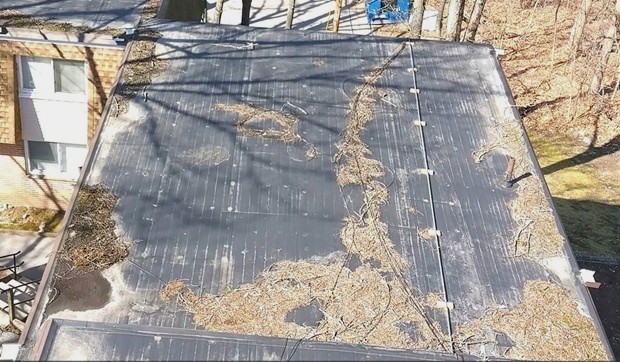Massachusetts Home Inspections YOUR INVESTMENT IS MY CONCERN

Roofs

There are many different types of roofs, and each will wear differently depending on factors such as its age, the number of layers, the quality of the materials, the method of installation, exposure to direct sunlight, prevailing weather conditions, required ventilation, and periodic maintenance. However, no matter the design life, every roof is only as good as the waterproof membrane beneath it. This membrane is typically concealed and cannot be inspected without removing the roofing material, which holds true for most roofs. In fact, the materials used on most pitched roofs are not designed to be fully waterproof; they are generally water-resistant instead.
In Massachusetts, there are two main types of roofs: pitched and flat. Pitched roofs are the most common and reliable. They come in various pitches and are typically finished with 3-tab or architectural shingles, which have a design life of 18 to 30 years (depending on the shingle quality and environmental factors), or wood shakes/shingles, which last 40 to 50 years. Roll roofing, which is used on roofs with a lower pitch, has a shorter design life of 10 to 15 years. These roofs may be layered, meaning one layer is installed over another, a common practice that I generally advise against. This approach reduces the design life of the new roof by several years and requires periodic servicing of all penetration flashings. Flashings that fail (leak) are often patched with mastic, which can shrink and crack over time, leading to recurring leaks if not properly maintained on an annual basis.
Among pitched roofs, roll roofing is the least dependable due to its low pitch, which hinders proper drainage compared to other roof types. As a result, roll roofing requires diligent maintenance. However, the least reliable roofs overall are flat roofs, primarily because they experience water retention and constant exposure to the sun’s rays. There are various materials used for flat roofs today, with Rubber (EPDM) being the most popular. Rubberized and PVC roofs are becoming the go-to choice for flat roofs, offering a life expectancy of 25 to 30 years with proper installation and maintenance. Some flat roofs are adequately sloped toward drains, but many are not, which leads to water pooling that will only dissipate through evaporation. These areas also tend to collect debris and are often not maintained as regularly as needed, causing them to wear out faster than areas with proper drainage. The most common cause of leaks in flat roofs is neglect—when roofs aren't regularly serviced or cleaned, and when foliage and debris block drainage channels. For more information, see Roof Maintenance

What remains true for all roofs is that, while their condition can be assessed, detecting a leak is nearly impossible unless it is actively occurring or through specific water tests, which are beyond the scope of my home inspection service. Even water stains on ceilings or framing in attics don’t necessarily indicate an active leak without additional corroborative evidence, which can sometimes be deliberately concealed. As a result, only the installer of the roofing material can provide a credible guarantee that a roof will not leak, and most installers do offer such a guarantee.
Massachusetts Home Inspections does not provide any guarantees regarding any roofs that I inspected. I will thoroughly examine each roof, evaluate its condition, and attempt to estimate its age, but I cannot predict its remaining life expectancy or guarantee that it will not leak. Typically, the sellers or current occupants will have the most detailed knowledge of the roof and its history. Therefore, I recommend asking the sellers about the condition of the roof or requesting for documentation from the roofing contractor. Additionally, I suggest including comprehensive roof coverage in your home insurance policy or obtaining a roof certification from a reputable local roofing company.
ROOF VENTILATION IS CRITICAL
Proper roof ventilation is a critical component of sound construction and long-term maintenance. Its primary function is to minimize heat accumulation within the roof cavity during the summer months, which can otherwise lead to premature deterioration of shingles. Additionally, effective ventilation helps prevent moisture-related issues such as fungal wood rot and condensation damage during colder months, thereby preserving the structural integrity of the roof year-round.
An effective roof ventilation system ensures a continuous flow of air into and out of the roof cavity. Typically, air enters at lower points, such as soffit vents beneath the eaves, and exits at higher points, like a ridge vent along the roof's peak. Most systems operate naturally through convection—warm air rises and escapes through upper vents, drawing in cooler, drier air through the lower vents—without the need for mechanical aids like fans. For optimal performance, the system must allow adequate airflow across the entire roof area. As noted earlier, insufficient ventilation can result in premature roofing material failure and fungal wood rot within the framing and sheathing. For a helpful visual reference on proper attic ventilation, visit Attic Ventilation.
It’s not uncommon to find a fifteen-year-old roof with inadequate ventilation showing signs of severe shingle cupping and advanced fungal wood rot on the attic side of the roof sheathing. As modern construction increasingly incorporates higher insulation values (R-values), tighter weather sealing, and other methods that reduce overall building airflow, proper roof ventilation has become more critical than ever to maintain roof integrity and prevent moisture-related damage.
Most importantly, never block your attic vents from cold air entry during the winter, as this is when proper ventilation is most crucial. If you notice cold air seeping into your living space from the attic, it may be a sign that additional insulation is needed on the attic floor or around the interior access hatch. As a reminder, attic vents should remain unobstructed and should be properly screened to keep out insects and rodents while allowing for continuous airflow.
CLICK 'GOOGLE PHOTOS' TO VIEW IMAGES OF ROOFING FAILS
Here is what my clients have to say about my home inspection services:
Press F5 (on your keyboard) for additional testimonials
Hi David,
I just wanted to send you a quick note to thank you again for your help yesterday!!
Andy and I are very appreciative of all of the information you provided us with, and we both feel that we have an excellent understanding of what needs to be done to this home, and can make our decision with assurance. The tips that you provided us with are invaluable, and I will definitely recommend you to anyone I know that is or will be buying a home.
Thank you again!
Alyssa















